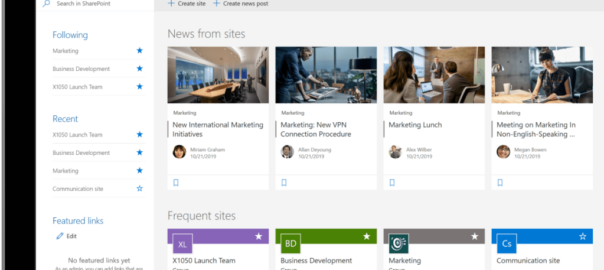Without a clear understanding of how your organization may benefit from MS SharePoint’s features, your deployment may fail and become an impediment to your productivity. We’ll walk you through the steps to effectively implementing SharePoint in your company in this post.
What is Microsoft SharePoint, and how does it work?
SharePoint is a Microsoft web-based collaboration and document management system that allows businesses and organizations to exchange and manage materials in order to foster cooperation. SharePoint also helps enterprises regulate access to information and automate workflow procedures across departments.
Why is SharePoint critical to your company’s success?
There are a variety of reasons why your business should use Microsoft SharePoint, including the following:
- Reduce the number of chores and activities you have to do on a daily basis.
- Protect your data from unwanted access.
- It allows team members to effortlessly collaborate.
- Easy connectivity with other Microsoft programs, such as Microsoft Teams, eliminates the complexities of looking for files and documents in email.
- Although Microsoft SharePoint may undeniably assist you in improving operational efficiency and streamlining your business procedures.
Steps to a Successful SharePoint Rollout
Decide on your vision
Begin by determining your company’s needs and how they may be met. Do you want to make data administration easier? What are you hoping to achieve? It’s critical to have clear objectives, regardless of what they are.
Form a Group
You’ll need to assemble a professional staff before installing SharePoint. They will play a critical part in the SharePoint installation, and their thoughts and ideas will be invaluable. The main corporate decision-makers, IT architects, project managers, administrators, and others should all be on your team.
Technical Preparation. You must first integrate your material into SharePoint before beginning the rollout process. You may utilize it for your integration since Microsoft supplies a range of tools that can ease your migration procedure, such as the SharePoint migration tool, Microsoft Fastrack, PowerShell, and so on.
You’ll also need to establish your service operation, which includes things like monitoring and documentation. You should also identify your ground rules, as well as your standards and regulations.
Perform a Test
It’s vital to do a trial run before implementing and introducing a new product or technology to the full business to confirm that everything is operating properly. Assign a team to do the tasks, such as storing, accessing, and sharing files, within SharePoint.
After you’ve completed the first test, roll out SharePoint to a single department in your company and ask them to begin moving their documents while you train the end-users. After it’s finished, obtain feedback and make any required revisions.
Organizational Implementation
It’s time to roll it out to your organization now that you’ve made improvements and addressed errors throughout the test and after the single unit implementation. Remember to provide adequate training and materials to assist your end customers.
Encourage SharePoint Adoption
It takes everyone’s dedication to getting the most out of your SharePoint setup. You must be the leader who inspires and encourages your team to embrace new technology and its potential.
To properly integrate SharePoint and use its features, thorough planning and assessment of your company’s needs are required. Ensure that you are proactive in making enhancements as demand develops, even after they have been rolled out.
If you’re still unclear about how Microsoft SharePoint might benefit your company, please contact us immediately and we’ll be pleased to assist you!

